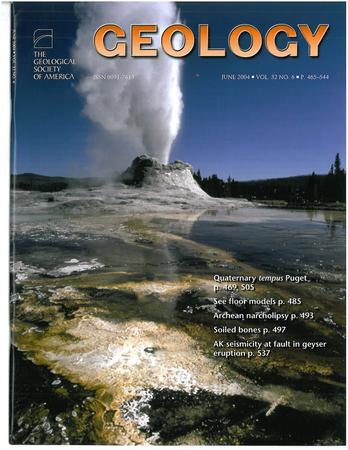美国西南部拉腊酰胺时代弧岩浆中广泛存在的硬石膏饱和度
IF 4.6
1区 地球科学
Q1 GEOLOGY
引用次数: 0
摘要
硬石膏被认为是岩浆中罕见的矿物相,在世界范围内仅有~ 33个记录。然而,硬石膏在近地表环境中很容易分解,这使得在地球表面或近地表收集的岩石中很难识别它以前的存在。在这样的样品中,只有小的硬石膏包裹体被其他矿物完全屏蔽,才能存活下来。在最近对美国西南部的一次实地考察中,我们采集了17个laramide时代(约40 - 80 Ma)岩浆系统,其中大多数与斑岩铜矿有关。通过光学显微镜和拉曼光谱对保存在约100个岩石样品中的磷灰石、角闪洞、斜长石和石英斑晶中的硬石膏包裹体进行了系统的搜索,发现这17个岩浆系统中的每一个都至少暂时是硬石膏饱和的。此外,大多数已发现的含岩浆硬石膏侵入岩均与斑岩型铜矿床有关,含岩浆硬石膏的侵入岩和火山岩均表现出较高的Sr/Y比值。这些观察结果表明,硬石膏饱和度和斑岩铜的形成是通过高压岩浆分馏作用联系在一起的。与一般的弧岩浆相比,含硬石膏的岩浆异常氧化,富含硫,似乎也异常富含水。因此,我们的首选解释是,高压下岩浆的生成和/或分馏促进了超水和氧化岩浆的形成,而超水和氧化岩浆反过来又促进了高硫含量,最终形成硬石膏。这些岩浆的高成矿潜力并不一定是由于它们的高硫含量,而可能是由高压岩浆的其他性质引起的。本文章由计算机程序翻译,如有差异,请以英文原文为准。
Widespread anhydrite saturation in Laramide-age arc magmas of the southwestern USA
Anhydrite is considered a rare mineral phase in magmas, with only ∼33 documented occurrences worldwide. However, anhydrite readily decomposes in the near-surface environment, making it difficult to recognize its former presence in rocks collected at or near Earth’s surface. In such samples, only small anhydrite inclusions fully shielded within other minerals can have survived. During a recent field trip to the southwestern USA, we sampled 17 Laramide-age (ca. 40−80 Ma) magma systems, most of which are associated with porphyry copper deposits. A systematic search for anhydrite inclusions preserved within apatite, amphibole, plagioclase, and quartz phenocrysts in ∼100 rock samples by optical microscopy and Raman spectroscopy revealed that each of these 17 magma systems was at least temporarily anhydrite-saturated. Also, most previously identified magmatic anhydrite-bearing intrusions are associated with porphyry copper deposits, and both intrusive and volcanic rocks containing magmatic anhydrite show high Sr/Y ratios. These observations suggest that anhydrite saturation and porphyry copper formation are linked via magma fractionation at high pressure. Compared to average arc magmas, anhydrite-bearing magmas are unusually oxidized and sulfur-rich and seem to also be unusually water-rich. Hence, our preferred interpretation is that magma generation and/or fractionation at high pressure promotes the formation of superhydrous and oxidized magmas, which in turn promotes high sulfur contents and ultimately the precipitation of anhydrite. The high mineralization potential of these magmas does not need to result from their high sulfur content but could be caused by other properties of high-pressure magmas.
求助全文
通过发布文献求助,成功后即可免费获取论文全文。
去求助
来源期刊

Geology
地学-地质学
CiteScore
10.00
自引率
3.40%
发文量
228
审稿时长
6.2 months
期刊介绍:
Published since 1973, Geology features rapid publication of about 23 refereed short (four-page) papers each month. Articles cover all earth-science disciplines and include new investigations and provocative topics. Professional geologists and university-level students in the earth sciences use this widely read journal to keep up with scientific research trends. The online forum section facilitates author-reader dialog. Includes color and occasional large-format illustrations on oversized loose inserts.
 求助内容:
求助内容: 应助结果提醒方式:
应助结果提醒方式:


